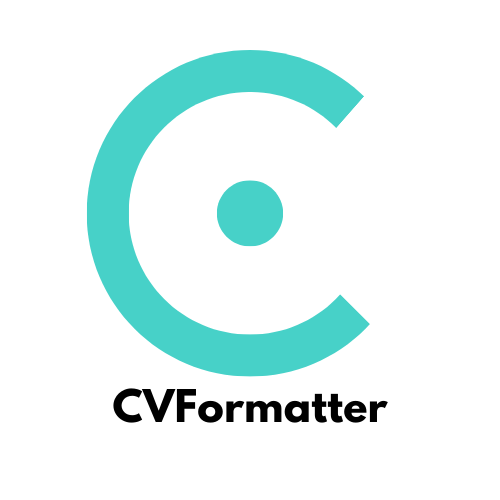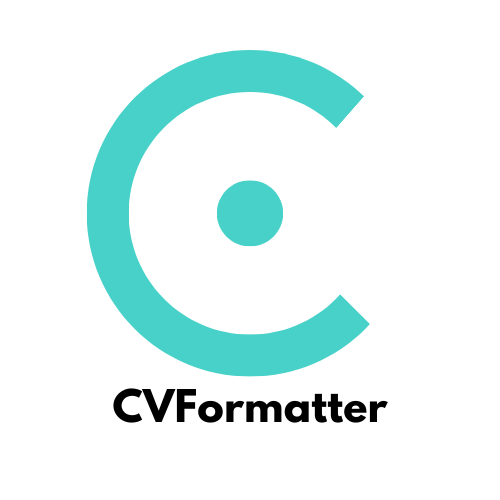Top Recruitment Trends You Need to Know for 2025

Recruitment in 2025 is evolving rapidly, driven by emerging trends in technology and workforce expectations. You will notice a significant shift towards data-driven hiring, with 70% of decisions relying on quantitative analytics. Companies using predictive analytics report a twofold improvement in hire quality, showcasing the power of technology in recruitment. Additionally, hybrid work models are reshaping talent acquisition trends, as 50% of full-time roles can now be performed remotely. These changes highlight the importance of adapting to recruitment trends 2025 to attract top talent and remain competitive in a dynamic market.
Key Takeaways
Use data to hire better. Analytics can help find great workers and make hiring easier.
Use AI tools to check CVs and improve candidate experiences. This saves time and finds better candidates.
Hire based on skills. Look for practical skills instead of just degrees to get a mix of talents.
Offer hybrid work options. This can help you hire more people and keep workers happy and productive.
Create a good employer image. Show your company’s values and support for diversity to attract the best workers.
AI Revolutionising Recruitment Trends

Artificial intelligence is transforming recruitment by streamlining processes, enhancing candidate experiences, and addressing ethical challenges. Its integration into hiring practices is reshaping how organisations attract and retain top talent.
Automating Recruitment Processes
Streamlining CV Screening and Candidate Shortlisting
AI-powered recruitment tools have revolutionised CV screening. These tools can process hundreds of CVs in seconds, identifying the most qualified candidates based on predefined criteria. For instance, Unilever's adoption of AI reduced CV screening time by 75%, enabling recruiters to focus on engaging with top talent.
Statistic | Impact |
|---|---|
AI automates CV screening and initial assessments | |
AI eliminates repetitive tasks | |
49% increase in candidate quality | AI enhances data-driven decision-making |
Enhancing Candidate Matching with AI Algorithms
AI algorithms analyse candidate profiles to match them with roles that align with their skills and experience. This approach improves the quality of hires and reduces turnover rates. Deloitte's research highlights a 49% improvement in candidate quality when organisations use AI in recruitment.
Personalised Candidate Experiences
Chatbots and AI-Driven Communication
AI chatbots provide instant responses to candidate queries, ensuring a seamless candidate journey. These chatbots can schedule interviews, answer FAQs, and offer real-time updates, enhancing the overall candidate experience. PwC reports a 40% increase in employee satisfaction due to AI-driven communication tools.
Tailoring Job Recommendations for Candidates
AI analyses candidate data to recommend roles that match their skills and career aspirations. This personalised approach fosters candidate-driven recruiting, making candidates feel valued and understood.

Ethical Considerations in AI Use
Avoiding Bias in AI-Driven Decisions
AI and technology in recruitment must prioritise fairness. Algorithms should focus on qualifications and experience, minimising biases related to gender, race, or background. LinkedIn Talent Solutions found that 68% of recruiters believe AI can help eliminate unconscious bias in hiring.
Ensuring Transparency and Fairness
Transparency is crucial when using AI in recruitment. Candidates should know how AI evaluates their applications. Organisations must also ensure that AI complements human judgement rather than replacing it entirely.
Ethical AI practices not only improve recruitment quality but also build trust with candidates, ensuring a fair and inclusive hiring process.
Skills-Based Hiring and the Increased Demand for Niche Skills
The recruitment landscape is shifting towards skill-based hiring as organisations prioritise practical expertise over traditional qualifications. This approach addresses talent shortages and aligns with the increased demand for niche skills in today’s job market.
Moving Beyond Traditional Qualifications
Emphasising skills over degrees and certifications
Employers are increasingly valuing skills over formal degrees. This trend reflects the need for job seekers to demonstrate real-world capabilities. By 2030, over 75% of entry-level tech roles will prioritise skills over degrees. This shift not only broadens the talent pool but also promotes diversity in recruitment.
Leveraging skills assessments in hiring
Skills assessments have become a cornerstone of skill-based hiring. These tools evaluate candidates’ abilities through practical tests, ensuring they meet job requirements. Companies adopting this strategy report a 25% reduction in time-to-hire and a 30% decrease in recruitment expenses.
Evidence | Description |
|---|---|
60% | Companies adopting skills-based hiring practices in 2024, up from 40% in 2020. |
45% | Increase in candidate diversity in tech companies using skills-based hiring. |
35% | Improvement in retention rates for tech companies using skills-based hiring. |
The Role of Micro-Credentials
Recognising short-term certifications and online courses
Micro-credentials are transforming how job seekers enhance their resumes. These certifications provide targeted skill-building opportunities, making candidates more competitive. HR professionals increasingly value these credentials for their ability to align with career objectives.
Partnering with educational platforms for talent pipelines
Organisations are collaborating with platforms like CourseCareers to access pre-screened, job-ready candidates. This approach ensures a steady pipeline of skilled talent while reducing hiring costs.
Upskilling and Reskilling Initiatives
Encouraging continuous learning for employees
Upskilling programmes empower employees to stay relevant in their roles. AT&T’s initiative to retrain 100,000 employees resulted in remarkable retention rates. Companies investing in training see a $4.70 return for every dollar spent.
Aligning training programmes with organisational needs
Tailored training programmes ensure employees acquire skills that align with business goals. Organisations with strong learning cultures are 92% more likely to innovate and 56% more likely to retain talent.

Skill-based hiring not only improves recruitment outcomes but also fosters a more inclusive and innovative workforce.
Hybrid Work Models Redefining Recruitment Trends

Hybrid work models are reshaping how organisations manage their workforce. By blending remote and in-office work, these models aim to balance flexibility and productivity while addressing the evolving needs of employees and employers.
Balancing Flexibility and Productivity
Designing hybrid work policies
Creating effective hybrid work policies requires a clear framework. You should define expectations for remote and in-office work, ensuring employees understand their responsibilities. Policies must also address scheduling, communication, and performance metrics to maintain productivity.
Addressing challenges of remote and in-office collaboration
Hybrid working introduces challenges like maintaining team cohesion and managing communication across different locations. You can overcome these by fostering collaboration through regular check-ins and team-building activities. A study shows that 83% of employees feel more productive in hybrid environments, while 82% report stronger connections with their teams.
Statistic | Finding |
|---|---|
83% of employees | Feel more productive in hybrid/remote environments than in-office/on-site settings |
84% of employees | Get more work done in hybrid/remote settings than in-office/on-site |
82% of hybrid employees | Feel more connected to their teams/managers than in-person respondents (72%) |
Technology to Support Hybrid Work
Tools for virtual collaboration and communication
Technology plays a vital role in hybrid work models. Tools like video conferencing platforms and project management software enable seamless collaboration. You should adopt solutions that align with your organisation’s needs to enhance productivity and employee engagement.
Ensuring cybersecurity in remote work setups
Remote work increases cybersecurity risks. Implementing robust security measures, such as encrypted communication tools and secure data access portals, protects sensitive information. Organisations with mature employee experience programmes report higher engagement, linking technology to productivity outcomes.
Finding | Description |
|---|---|
Productivity | 84% of employees report higher productivity in hybrid settings compared to in-office work. |
Connection | 82% of hybrid employees feel connected to their teams, indicating technology's role in fostering relationships. |
Leadership Priorities | 84% of leaders prioritise increasing productivity when choosing work styles, emphasising the importance of technology. |
Impact on Talent Acquisition
Expanding talent pools with remote work options
Hybrid work models expand your recruitment opportunities. Remote work has grown by 173% since 2005, allowing organisations to access a global workforce. Additionally, 16% of companies now exclusively hire remote workers, demonstrating the shift towards flexible recruitment strategies.
16% of companies now exclusively hire remote workers.
80% to 90% of the U.S. workforce would like to telework at least part-time.
Adapting recruitment strategies for a global workforce
Hybrid work models require you to rethink recruitment strategies. By offering remote options, you can attract top talent from diverse locations. This approach not only broadens your talent pool but also enhances workforce diversity and innovation.
Hybrid work models redefine recruitment by blending flexibility with productivity, supported by technology and global talent acquisition strategies.
Diversity and Inclusion as a Core Talent Acquisition Trend
Diversity and inclusion have become essential components of modern recruitment strategies. Organisations now recognise the value of fostering diverse hiring practices to improve innovation, employee satisfaction, and overall performance.
Building Inclusive Hiring Practices
Reducing bias in job descriptions and interviews
You can reduce bias in job descriptions by using neutral language and avoiding gendered terms. Tools like Textio help identify and eliminate biased phrasing, ensuring job postings appeal to a broader audience. During interviews, structured formats standardise questions, focusing on skills and qualifications rather than subjective impressions. This approach promotes fairness and equity in hiring decisions.
Implementing blind recruitment techniques
Blind recruitment removes identifying details such as names, photos, and addresses from CVs. This method ensures candidates are evaluated solely on their skills and experience. Organisations like Atlassian have seen a 25% increase in applications from women and underrepresented minorities after adopting blind recruitment practices.
Organisation | Improvement Type | Percentage Increase |
|---|---|---|
Atlassian | Applications from women and underrepresented minorities | 25% |
Salesforce | Employee satisfaction among underrepresented groups | 24% |
Unilever | Diversity hires | 14% |
Measuring and Improving Diversity Metrics
Tracking representation across all levels
Tracking diversity metrics helps you understand representation within your organisation. Metrics such as recruitment figures, promotion rates, and pay comparisons reveal areas needing improvement. For example, the British Transport Police doubled minority applicants by using data-driven strategies to enhance their hiring processes.
Setting actionable diversity goals
Setting clear goals ensures progress in building a diverse workforce. You can aim to increase representation in leadership roles or improve retention rates among underrepresented groups. Organisations with neurodiversity programmes report a 30% boost in productivity and innovation, highlighting the benefits of targeted diversity initiatives.
Creating an Inclusive Workplace Culture
Training managers on unconscious bias
Unconscious bias training equips managers to make fairer decisions. These programmes raise awareness of hidden prejudices and teach strategies to mitigate them. Companies with diverse management teams report 19% higher revenue, demonstrating the impact of inclusive leadership.
Encouraging employee resource groups and allyship
Employee resource groups (ERGs) provide a platform for underrepresented employees to connect and share experiences. Encouraging allyship fosters a supportive environment where all employees feel valued. Delta Airlines, for instance, reported a 10% increase in global market penetration after enhancing their diversity and inclusion initiatives.

Diverse hiring practices and inclusive workplace cultures not only improve employee satisfaction but also drive organisational success.
Employer Branding and Its Role in Recruitment Trends 2025
Employer branding plays a pivotal role in attracting top talent. A strong employer brand reflects your organisation’s culture, values, and work environment, making it easier to connect with candidates who align with your mission.
Showcasing Organisational Values
Highlighting commitment to sustainability and social impact
Candidates increasingly prioritise companies that demonstrate a commitment to sustainability and social responsibility. By showcasing your efforts in these areas, you can appeal to job seekers who value ethical practices. For example, highlighting initiatives such as reducing carbon footprints or supporting local communities can enhance your reputation as an employer of choice.
Promoting a positive workplace culture
A positive workplace culture is essential for building a strong employer brand. You should emphasise aspects like employee well-being, collaboration, and inclusivity. Candidates want to know what it’s like to work for your organisation. In fact, 76% of candidates want insights into company culture and values before accepting a job offer. A strong employer brand can also lead to a 50% increase in qualified candidates.
Statistic | Insight |
|---|---|
76% of candidates | Want to know about company culture and values before accepting a job offer. |
50% increase | A strong employer brand leads to a 50% increase in qualified candidates. |
Leveraging Social Media and Digital Platforms
Engaging with candidates through LinkedIn and other platforms
Social media platforms like LinkedIn, Facebook, and Instagram have become indispensable for recruitment. You can use these platforms to share job postings, engage with potential candidates, and showcase your company’s achievements. Over 94% of recruiters use social media to source candidates, while 79% of job seekers rely on these platforms during their job search. This highlights the importance of maintaining an active and engaging online presence.
Sharing employee testimonials and success stories
Sharing authentic employee testimonials and success stories can humanise your brand and build trust with candidates. Job seekers often evaluate companies by exploring their social media profiles. In fact, 68% of candidates visit social media to assess a company’s culture and values. Highlighting employee experiences can provide valuable insights into your organisation’s work environment.

Transparency in Recruitment
Providing clear information about roles and expectations
Transparency in recruitment fosters trust and respect among candidates. Clearly outlining job roles, responsibilities, and expectations ensures candidates understand what they are applying for. This approach not only improves candidate engagement but also reduces misunderstandings during the hiring process.
Offering insights into career growth opportunities
Candidates value organisations that prioritise their professional development. By offering insights into career growth opportunities, you can attract ambitious individuals who seek long-term growth. Promoting pay transparency and sharing information about training programmes can further enhance your employer brand. In fact, 84% of candidates expect transparency about company culture during the hiring process, reflecting the importance of openness.
A transparent recruitment process builds trust, enhances candidate experiences, and strengthens your organisation’s reputation as a reliable employer.
Recruitment trends in 2025, such as AI, skills-based hiring, hybrid work models, diversity, and employer branding, are reshaping talent acquisition. You must adapt to these changes to remain competitive and attract top talent. A strong employer brand plays a critical role, as 75% of job seekers research company reputation before applying. Additionally, 85% prefer organisations with robust branding.
Statistic | Implication |
|---|---|
75% of Job Seekers Research Employer Reputation Before Applying | Strong employer branding is crucial for attracting quality candidates and reducing time to fill positions. |
85% of Job Seekers Prefer to Work for Companies with Strong Employer Brands | A strong employer brand is essential for attracting top talent, especially in competitive industries. |
50% of Job Seekers Turn Down Offers Due to Poor Candidate Experience | Prioritising candidate experience can enhance employer branding and improve the ability to secure top talent. |
76% of Recruiters Believe They Have Become More Strategic | Recruiters must align with business goals to ensure they meet both immediate hiring needs and future skill gaps. |
Investing in technology, training, and inclusive practices ensures you stay ahead in this evolving landscape. Organisations that prioritise candidate experience and innovation will thrive.
Staying proactive in adapting to these trends will help you secure top talent and maintain a competitive edge in the market.

